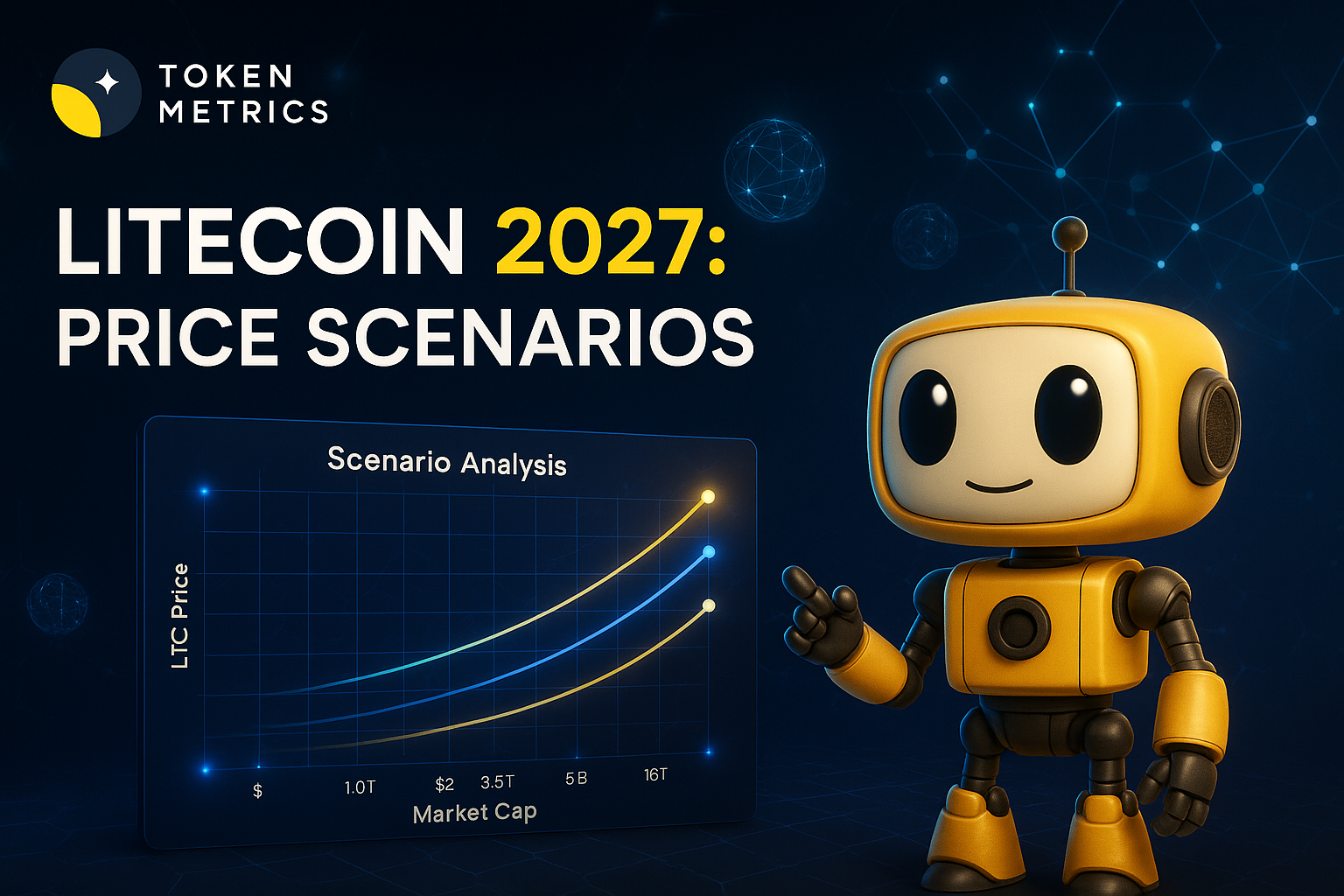
How One API Can Streamline Trading Across Multiple Crypto Exchanges

Managing crypto trading across several exchanges can be complicated, especially as the digital asset market expands rapidly. For developers, traders, and automated systems, switching between multiple exchange platforms often leads to fragmented workflows, inconsistent data, and increased operational risks. But can you solve this challenge by using a single API to trade across multiple crypto exchanges?
Understanding Crypto APIs and Multi-Exchange Trading
APIs, or Application Programming Interfaces, have become the backbone of modern crypto trading. Most centralized exchanges—like Binance, Coinbase, or Kraken—offer proprietary APIs, enabling users to execute trades, obtain real-time prices, manage portfolios, and stream account activity programmatically. Traditionally, each exchange requires users to generate unique API keys and implement its specific syntax and rules, which makes integrating multiple platforms into a unified workflow an ongoing challenge.
Multi-exchange trading is increasingly common for several reasons:
- Diversification: Spreading assets across exchanges mitigates counterparty risk.
- Liquidity: Some pairs or markets may have better availability and tighter spreads on certain exchanges.
- Arbitrage: Traders seek price differences across exchanges for potential profit opportunities.
Attempting to manage these scenarios manually—or through siloed APIs—can result in lost efficiency and missed opportunities.
The Promise of Unified API Integrations
A unified API for crypto trading consolidates access to multiple exchanges behind a single set of endpoints, abstracting the idiosyncrasies of each platform. This approach offers several potential benefits:
- Simplified Codebase: Developers write integration logic once, not for every exchange.
- Consistent Data Structures: The same data model applies regardless of the underlying exchange, improving reliability and analysis.
- Centralized Authentication: Exchange credentials and API keys can be managed in one secure place.
- Faster Deployment: Connecting to new exchanges often requires just configuration, not fresh code development.
Several solutions have emerged to deliver this unified experience. Independent aggregator services and open-source libraries—such as CCXT (CryptoCurrency eXchange Trading Library), 1inch (for DEX aggregation), or specialized enterprise APIs—translate commands from a user into the correct format for the targeted exchange and relay responses back to the application.
Challenges and Considerations of Multi-Exchange APIs
Despite their promise, there are important technical and operational considerations when using a unified API to trade across exchanges:
- API Limitations and Rate Limits: Each exchange imposes different request/second caps and may throttle or ban aggressive use. Aggregators must intelligently manage these restrictions to avoid disruptions.
- Latency and Data Consistency: Real-time price and account data may update at slightly different speeds per exchange, creating opportunities for short-term mismatches.
- Security and Credential Management: Centralizing API keys increases both convenience and responsibility. Always adopt best security practices, like encryption, regular key rotation, and principle of least privilege.
- Feature Parity: Not all exchanges support the same order types, margin trading, or withdrawal mechanisms—a unified API might expose only a subset of universal features, or try to map advanced functionality via custom logic.
- Compliance and KYC: Aggregated services may still require you to verify your identity individually on every exchange, and must comply with relevant jurisdictional regulations.
Before adopting a unified API, carefully evaluate each provider’s support for your target exchanges, ongoing maintenance, customer support, and transparency regarding reliability and uptime.
Use Cases and Scenarios for One-API Multi-Exchange Trading
Unified API approaches are particularly valuable for:
- Algorithmic and Quantitative Trading: Bots and quant models can arbitrage or implement sophisticated strategies without manual exchange integration.
- Portfolio Management: Real-time balance checks, PnL tracking, and consolidated analytics across all holdings.
- AI-Driven Trading Tools: With data aggregated from multiple locations, AI models can train, backtest, and operate on richer, more consistent datasets.
- Building Crypto Apps and Dashboards: Developers can embed charts, strategies, and actionable tools for users who may deposit assets with many different third-party exchanges.
Choosing the right multi-exchange API solution depends on your operational needs, preferred data formats, scalability goals, and trust in the vendor’s security protocols. Some organizations also combine unified APIs with bespoke integrations for specialized features or liquidity.
The Role of AI and Advanced Analytics in API-Driven Trading
Modern trading strategies are increasingly shaped by AI and predictive analytics. When paired with unified APIs, AI tools can:
- Automatically identify arbitrage opportunities by detecting real-time price differences across platforms
- Optimize order routing for best execution and minimal slippage
- Risk-manage portfolios using aggregated signals—from market data, order books, and on-chain analytics
- Enable smarter alerting and automated trading logic
For example, platforms like Token Metrics offer AI-powered insights that can be integrated into multi-exchange trading workflows via robust APIs. Access to aggregated signals and analytics enhances decision accuracy and automation capabilities in an increasingly complex trading environment.
Build Smarter Crypto Apps & AI Agents with Token Metrics
Token Metrics provides real-time prices, trading signals, and on-chain insights all from one powerful API. Grab a Free API Key
FAQs About Trading with One API Across Exchanges
What exchanges are supported by unified trading APIs?
Coverage varies by provider, but leading multi-exchange APIs often support integrations with major centralized exchanges—like Binance, Coinbase Pro, Kraken, Bitfinex—as well as some decentralized platforms. Always check providers’ documentation for updated support lists.
Are there security risks with centralized API management?
Yes, consolidating your exchange API keys introduces single points of vulnerability. Use strong authentication, encrypted storage, access controls, and monitor for suspicious access. Select API providers with strong security track records and certifications.
Do unified APIs support advanced order types (like stop loss or OCO)?
Many unified APIs prioritize compatibility with basic order types (e.g., limit, market orders), but advanced orders may be available only if the destination exchange supports them. Some aggregators implement custom logic to approximate complex order types. Review each API’s documentation for order-type coverage.
How do fees work with multi-exchange trading APIs?
Fees are typically passed through transparently to the underlying exchange. Some unified APIs may also levy their own usage or subscription fees. Review the pricing page and terms of service before integrating any multi-exchange API.
Can I use a unified API for both centralized and decentralized exchanges?
Certain unified or aggregator APIs support both exchange types, but you may experience differing levels of feature parity and security requirements. Decentralized exchanges often require wallet-based authentication, which may require additional integration steps.
Disclaimer
This article is intended for informational and educational purposes only. It does not constitute financial, investment, or legal advice. Crypto markets carry risk—always conduct your own research and consider regulatory compliance before using trading APIs or integrating with exchanges.

.svg)

Create Your Free Token Metrics Account

.png)




%201.svg)
%201.svg)


%201.svg)
























.svg)




.png)